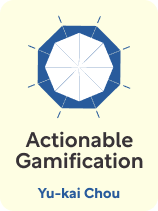

This article is an excerpt from the Shortform book guide to "Actionable Gamification" by Yu-kai Chou. Shortform has the world's best summaries and analyses of books you should be reading.
Like this article? Sign up for a free trial here.
What is a gamification system? How does it promote motivation and engagement? How can you create one for your business?
In Actionable Gamification, Yu-kai Chou explains how a gamification system uses techniques, like setting milestones for desired behaviors and achievements, to engage customers or improve employee productivity. However, Chou claims this system only works when implemented appropriately.
Read on to learn Chou’s five steps for creating a gamification system for your business.
Create a Gamification System for Your Business
Gamification is the use of techniques developed by game designers in non-game settings—such as pursuing personal goals or furthering business objectives. These business objectives could be anything from getting customers to engage with a company’s social media, getting users to make an app part of their everyday lives, or getting employees to hit productivity targets. Chou explains that gamification systems may include creating a point system, offering prizes, or setting milestones for desired behaviors and achievements.
In this article, we’ll explore opportunities for gamification in business and the five key steps for creating a gamification system, according to Chou.
(Shortform note: Chou’s book makes it clear that gamification can be put to a variety of uses, including gamifying your lifestyle—for example, creating a fun reward system for completing household chores. However, most of the book focuses on applying gamification strategies to business objectives, so we have zeroed in on these strategies for the guide.)
| The Risks of Gamification As Chou states, many gamification efforts fail. Therefore, in each of the three opportunities for gamification, it’s important to understand the potential risks as well as benefits. 1. Marketing experts warn that gamification can backfire and drive customers away if not implemented properly. If the “game” is too complex to figure out or too difficult to “win,” this will frustrate customers and repel them from your brand. 2. Management experts caution that misguided gamification efforts can have the opposite effect and leave employees demotivated. If gamification leaves employees feeling shamed when they “lose,” this can actually leave workers disengaged and less productive than before. 3. Product design experts explain that gamification can be very expensive and require significant investment. They advise you to also consider the cost of maintaining a game long-term, as successful gamification efforts often continue introducing new content and updates year after year to keep users engaged for the long haul. |
The Five Key Steps
Chou explains that when planning a gamification system for your business, you should begin by mapping out five key steps: Define your business goals, identify your players, determine your ideal behaviors, design your feedback system, and plan your rewards. Here we’ll take a look at each.
1) Define Your Business Goals
Chou suggests that first, you must define your business’s goals for creating the gamification system. For example, your goal may be to get more people to come to your website, for customers to stay subscribed to your service longer, or for employees to hit certain productivity goals. Understanding this first will clarify the overall purpose of your game.
(Shortform note: Management experts stress the importance of choosing narrow and specific metrics for your business goals rather than abstract concepts or ideals. For example, if you’re starting a customer loyalty program, you wouldn’t want a vague goal like “inspiring customer devotion.” Instead, you’d want to focus on a measurable metric like, “Decrease the number of customers who cancel their subscriptions” or “Increase the number of purchases made by existing customers.” By choosing something measurable, you can zero in on what exactly your gamification system will achieve.)
2) Identify Your Players
Secondly, Chou recommends you consider who is going to play your gamification system. Is this for your customers? Your employees? People interested in your brand but haven’t yet made their first purchase? The more specific you can be, the better.
Chou also recommends you think deeply about the types of people who would be drawn to your game. Are they more interested in creativity? Achievement? Competing with each other? You may want to consider creating different roles for different types of players in your game.
(Shortform note: In A Theory of Fun for Game Design, Raph Koster writes that people tend to enjoy games that play to their strengths. So for example, athletic people tend to enjoy physically active games, people with high linguistic intelligence often pick word games like Scrabble or crosswords, and people with high visual intelligence are drawn to visual games like jigsaw puzzles. In planning your gamification system, consider whether your players may have strengths in common, as this could also lead you toward the types of game mechanics a broad audience would find most satisfying.)
3) Determine Your Ideal Behaviors
A gamification system’s ideal behaviors are the actions your players must take to win the game. For example, in Clue, a board game based on solving mysteries, the ideal actions are collecting clues and figuring out who committed the murder. In American football, the ideal behaviors are moving the ball down the field and getting it into the endzone.
Chou argues that your ideal behaviors should flow from your game’s business goals. If you want your customers to spend more time on your website, then your ideal behavior would be engaging with the content on the site. If you want your employees to complete more projects, then your ideal behaviors are the actions they must take to complete each project.
(Shortform note: Gamification experts stress the importance of breaking your objectives into smaller component behaviors so that you can reinforce all the activities that lead to your desired outcomes. For example, if you’re creating incentives for your sales team, don’t only give points for a completed sale, but also for behaviors that tend to increase sales, such as asking customers follow-up questions, tailoring pitches to their goals, bringing up special offers, and so on.)
4) Design Your Feedback System
Chou states that a game’s feedback system is how it sends information back to the player. In your gamification system, the feedback must reinforce the player’s ideal behaviors while giving them the information they need to make in-game decisions. Feedback systems could include points, rewards, penalties, countdown timers, or symbols triggered during the game that alert players to a change in their conditions or opportunities.
For example, on the game show Jeopardy!, contestants gain points by answering questions correctly and lose points by answering incorrectly. In the game “redlight greenlight,” displaying a red or green card signals a change in the game’s condition and the expectations of players. For your system, let’s say you give customers a punch card for a free cup of coffee after ten purchases. Each time the card is punched, they are getting feedback that reinforces the desired behavior (buying coffees).
(Shortform note: In A Theory of Fun for Game Design, Raph Koster expands on how you might design a feedback system for your gamification system. He explains that successful games teach their players pattern recognition—human brains are designed to recognize patterns and find this process inherently rewarding. Therefore, in designing a feedback system, consider how you can build patterns that your players will recognize. For example, in gamifying management, many companies use colors to represent different levels of success in achieving metrics. A project will be “green” if it’s completed on time and “red” if it’s late. Employees will recognize the pattern in this feedback system and strive to keep their projects “green.”)
5) Plan Your Rewards
Finally, Chou recommends considering what players get if they “win.” These may be symbolic prizes such as trophies, ribbons, or badges. They could also be monetary rewards or real-world prizes such as lottery jackpots or bonus incentives.
Recall the three areas where you can use gamification: management, marketing, and product design. In management, these rewards could be bonuses employees unlock by hitting certain targets. In marketing, this could take the form of random prizes under the bottle cap of a soft drink. In product design, these could take the form of virtual points or rewards users gain from an app.
Exercise: Design a Gamification System
In this exercise, you’ll have a chance to brainstorm your own gamification system from scratch using Chou’s strategies. Each step will guide you in creating a gamification project for your business.
- Discuss the goals of your gamification system. What is the ultimate objective? What are the actions players will need to take to achieve it?
- Who are your players? Are they your customers? Your employees? Now just brainstorm: What kind of gaming experiences would your players like best?
- How will you provide feedback to your players? Recall that the goal of feedback systems is to reinforce ideal behaviors.
- Consider the rewards your players will gain from this gamification system. What happens when they “win?”

———End of Preview———
Like what you just read? Read the rest of the world's best book summary and analysis of Yu-kai Chou's "Actionable Gamification" at Shortform.
Here's what you'll find in our full Actionable Gamification summary:
- How to use gamification to grow your business
- Why some gamification systems are addictive and others fail
- How to keep players engaged and motivated






